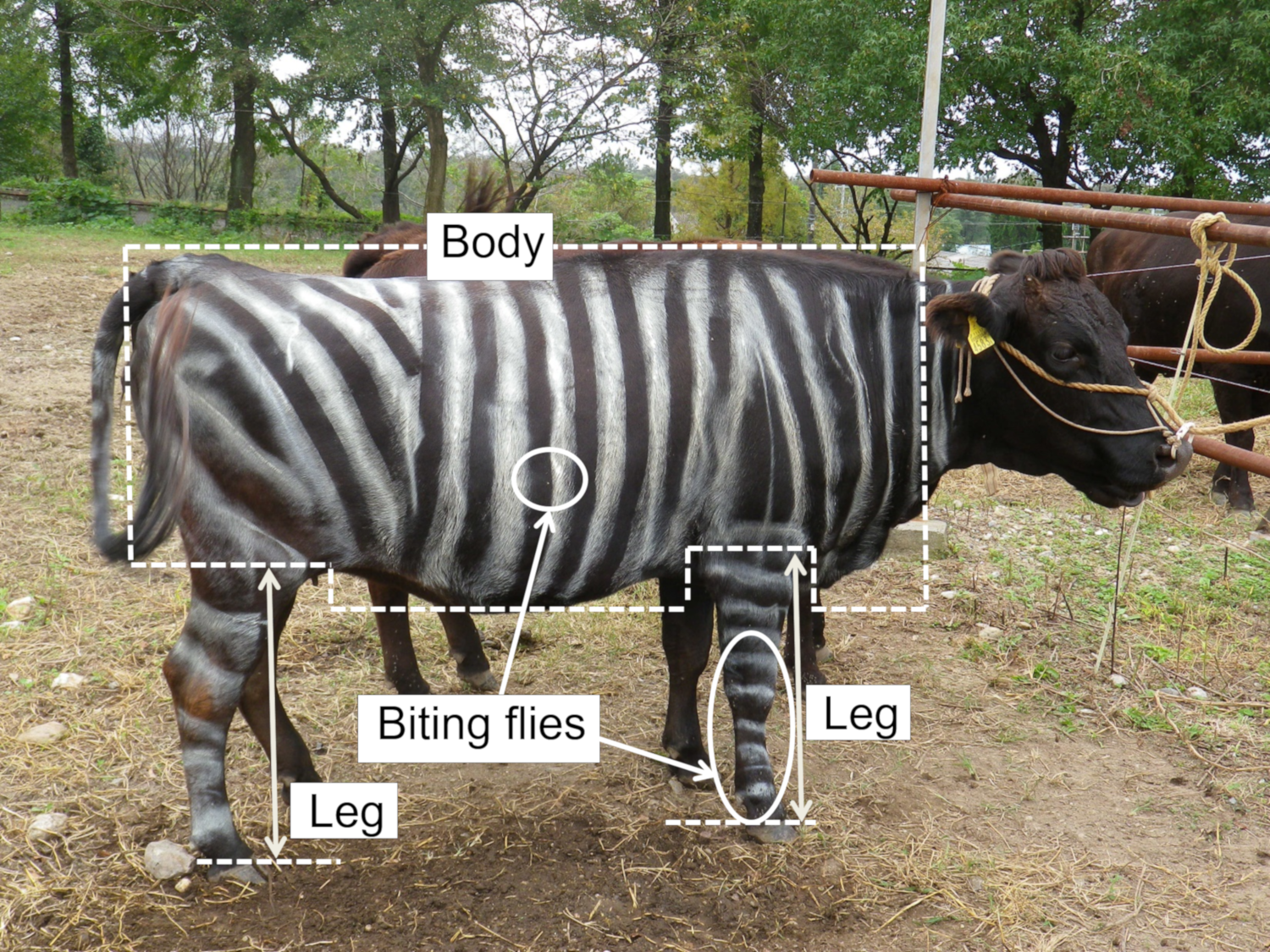07
Jan
What Happens When You Paint Zebra Stripes on a Cow? Eliminate Pesticide Use

(Beyond Pesticides, January 7, 2020) It may seem peculiar at first sight, but painting zebra stripes on domestic cattle has the potential to significantly reduce the livestock industry’s use of toxic pesticides, according to research published last year by Japanese scientists at the Aichi Agricultural Research Center in Nagakute, Japan. Each year, farmers spend an estimated $1.6 billion on pesticides in the livestock industry, while biting flies cause over $2 billion of economic loss. This clever example of applied ecology could change those numbers with the added benefit of a safer environment.
While long considered a mystery, the science is now generally in agreement that zebras developed their stripes in order to confuse and ward off biting flies and the various ailments that can be passed on by the pests. While some cow breeds were developed with spotted patterns that may confer some fly deterrence, researchers used mono-colored Japanese Black cows to test their hypothesis.
Six cows were separated into one of three groups: white and black stripes, black stripes, and an unpainted control. Stripes were painted with a water-based lacquer. The cows were observed starting 30 minutes after the paint was applied and allowed to air out. For a period of nine days, cows were observed in 30-minute windows while scientists recorded their fly-avoidance responses, including head throws, ear beats, leg stamps, skin twitches, and tail flicks.
The changes in cow behavior were significant. Black and white painted cows displayed approximately 40 fly avoidance responses over the 30-minute windows, while black painted and the control groups displayed 54 and 53 responses, respectively. In total, black and white painted cows decreased their fly-avoidance responses by around 20%. Moreover, these cows also display fewer energy-intensive responses, like head throws, ear beats, and leg stamps, opting primarily for skin twitches to manage the pests that did attack.
While there was some suspicion that the smell of the paint was having an impact on pest levels, researchers point to the fact that there was no difference between cows painted with black stripes and the control group, but a major difference between he two painted groups.
“This work provides an alternative to the use of conventional pesticides for mitigating biting fly attacks on livestock that improves animal welfare and human health, in addition to helping resolve the problem of pesticide resistance in the environment,” the study authors write.
The main drawback for widespread implementation of this approach appears to be the length of time that the paint will last. While water-soluble paints are much cheaper than pesticides, they generally wash out over a couple weeks, requiring reapplication. Researchers indicate that more attention is needed to animal-safe paints that can last longer during the four-month biting fly season.
Continuous pesticide use to repel biting flies on livestock puts animal health at risk, contaminants milk and meat products, and leads to pesticide resistance; it facilitates a pesticide treadmill of increasingly toxic products to replace those that fail. While many organic cattle farmers already emphasize non-toxic methods of fly control on their farms, applying zebra stripe mimicry could become a successful part of an integrated strategy for organic and conventional farmers alike.
Biting fly problems are amplified by large confined animal feeding operations (CAFOs), further increasing stress and risk of injury to domestic livestock. Help Beyond Pesticides move U.S. production away from these inhumane conditions and towards novel approaches that apply the wisdom of natural systems to pest management. Support the Farm System Reform Act introduced by Senator Cory Booker as a means of eliminating CAFOs. And see Beyond Pesticides’ webpage on organic agriculture for more information on the success of farming without toxic pesticides.
All unattributed positions and opinions in this piece are those of Beyond Pesticides.
Source: PLOS One










